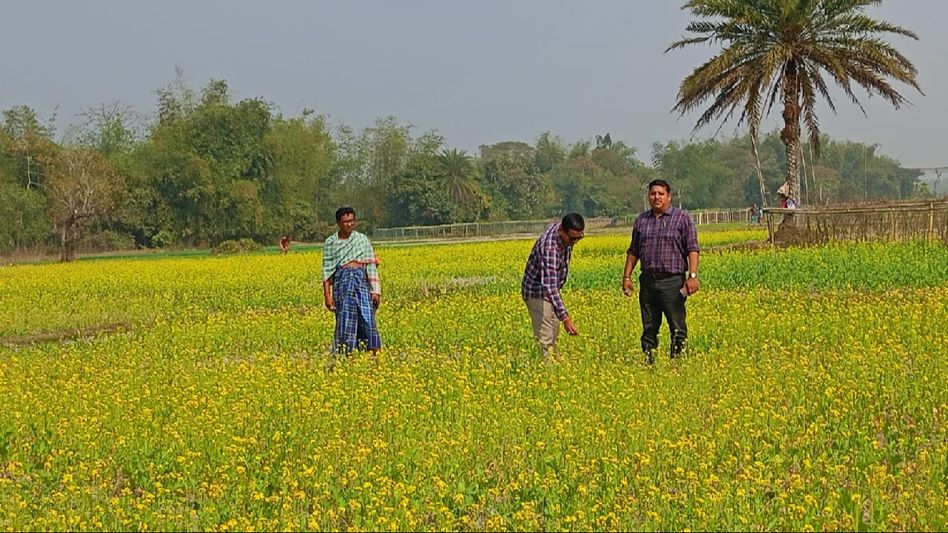Tripura farmers reap benefits with high-yield varieties of mustard
Mustard cultivation is experiencing a significant surge in various regions of the state, particularly in Pathalia village under the Bishalgarh sub-division of Sepahijiala district.

Mustard cultivation is experiencing a significant surge in various regions of the state, particularly in Pathalia village under the Bishalgarh sub-division of Sepahijiala district.
This upswing can be attributed to the cost-effectiveness and rapid yield associated with mustard farming. Farmers in Bishalgarh are reaping the rewards of adopting improved varieties of mustard, resulting in an annual increase in cultivation.
Prabir Datta, an Agriculture sector officer, informed India Today NE that the PM27 variety has proven to be more productive than the traditional local mustard, capturing the interest of farmers.
"Many have opted for mustard cultivation immediately after harvesting Aman paddy without leaving the land fallow. Subsequently, the farmers replant rice, resulting in three crops per year on the same land. Different fields in Bishalgarh are now cultivating advanced varieties of mustard, with a plant height of 1.5 to 2 feet. Unlike the previous large mustard plants with low yields, this new, smaller variety yields from root to head and can be harvested within 80 days of sowing," he stated.
Datta highlighted that the Agriculture department has been providing crucial support to farmers through the NME project and ATMA project to ensure the success of mustard cultivation. Additionally, necessary fertilizers, seeds, and pesticides have been distributed to farmers by the agriculture department.
The district agriculture department is optimistic about a bumper crop of mustard in Seipahijala district this year.
Upon interacting with mustard farmers in various villages, it was revealed that they anticipate producing 300 kgs of mustard per acre of land. Due to the profitable and favorable environment for mustard cultivation, farmers in Sepahijala district have actively cultivated mustard this Rabi season.
Badal Kar, a mustard farmer from Pathalia village, shared that he cultivates mustard on 1 bigha of land (0.33 Acre) annually to meet his needs. "This time, I cultivated mustard on 2 bigha of land. I hope the mustard yield will be better than in previous years. I can sell mustard for Rs 15 thousand to fulfill my needs," he said.
Mustard farmers emphasized that the maximum cost of mustard cultivation is Rs 5,000 per kani of land (0.396 Acre). Mustard can be sold at the price of Rs 5,000 per 40 kg. With an average yield of 300 kgs per acre, it can be sold for over Rs 30,000 per acre of cultivated land.
Harekrishna Bhowmik highlighted that mustard cultivation does not require irrigation. "Moreover, mustard can be cultivated in less time. The main challenge for mustard is the jap beetle, and this time, the agriculture sector officer has advised spraying insecticides to control insect attacks. Mustard oil has many medicinal properties, and mustard leaves are used for animal fodder and to enhance soil fertility. Mustard plants can also be used as fuel. Furthermore, when mustard is cultivated in the land, the fallen mustard leaves satisfy a significant portion of the land's food demand," he explained.
Copyright©2025 Living Media India Limited. For reprint rights: Syndications Today









